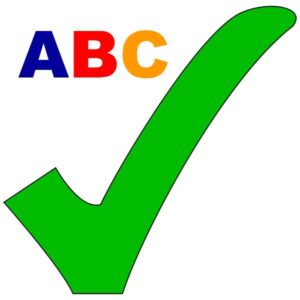Four Proofing Pointers for Producing Flawless Copy
Proofreading is an important element of success in the business world that’s often overlooked. Sending a proposal to a prospect that’s full of punctuation and grammatical errors for instance, could cost you the prospect’s business and potentially earn you a reputation of producing shoddy work. While proofreading can sometimes be a timely task due to length of copy, it’s necessary to produce top-notch work. Luckily, there are a number of shortcuts and tricks that will help you save time and energy when proofing a project. I’ve outlined four of them below.
1. Print it out.
 It’s easier on the eyes to read a document on paper as opposed to reading it on a computer monitor. When proofing on paper:
It’s easier on the eyes to read a document on paper as opposed to reading it on a computer monitor. When proofing on paper:
- Double space your text. This makes it easier to catch errors, typos, etc. and gives you room to write notes and make edit marks above or below sentences.
- Use a red pen or a pen of contrasting color to make mark-ups easier to see.
- Break down the document.
- Read it through once looking only for typos, spelling errors, grammar, punctuation, etc.
- Read it through a second time focusing only on the content – does it flow, make sense, etc.
- Read it backward. Since our minds usually correct errors as they make sense in a complete thought, reading it from the end to the beginning is a great way to catch typos, spelling errors, etc.
- Always get a second set of eyes to proof.
2. Proofing from the screen.
On a PC, the CTRL + F function will allow you to search a document for specific words, names, punctuation marks, etc. For example, you can:
- Search the entire document for proper names by typing in the name of a person or company to make sure it’s spelled correctly throughout the document.
- Search for apostrophe marks to make sure you’re using possessives and contractions correctly. For example, years do not need apostrophes because they aren’t possessive of anything. Correct: 1980s. Incorrect: 1980’s.
- Replace double spaces after sentences with only one space.
3. Spell check isn’t foolproof.
 While spell check is a valuable tool, don’t become too dependent on it! Spell check doesn’t catch homophones, homonyms or frequently transposed words. So, you could use a word in the wrong context and spell check won’t flag it. Here are some examples:
While spell check is a valuable tool, don’t become too dependent on it! Spell check doesn’t catch homophones, homonyms or frequently transposed words. So, you could use a word in the wrong context and spell check won’t flag it. Here are some examples:
- Homophone: a word that is pronounced the same as another word but differs in meaning: palate (the roof of your mouth/sense of taste), pallet (bed or type of shipping platform) and palette (set of colors).
- Homonym: a group of words that share the same spelling and the same pronunciation but have different meanings: mouth (of a river) and mouth (of an animal).
- Frequently transposed words: affect (most often used as a verb; means to influence) effect (most often used as a noun; a result).
4. AP Style is still the golden rule.
![]() We use AP Style at Marketing Works. As AP Style rules are constantly changing, we set up an account at www.apstylebook.com to ensure we’re informed of the most up-to-date revisions. Here’s a small sampling of some current AP Style guidelines:
We use AP Style at Marketing Works. As AP Style rules are constantly changing, we set up an account at www.apstylebook.com to ensure we’re informed of the most up-to-date revisions. Here’s a small sampling of some current AP Style guidelines:
- “More than” is preferred with numbers; “over” refers to special elements (i.e., “The vendor had more than 30 apples.” “The vendor threw an apple over my head.”)
- Write out numbers one through nine
- Don’t use the % sign, write out the word “percent”
- Make sure you’re using correct abbreviations. For example, AP Style doesn’t follow standard ZIP code abbreviations (i.e., Massachusetts ≠ MA’; Massachusetts = Mass.)
Want your organization’s communications to be spotless? Marketing Works has an eye for excellence. Contact us today!
Melissa H. • July 27, 2012
Posted in these categories:
Marketing TipsWith these tags:
AP, AP Style, AP Style guidelines, AP Style rules, Brenda Stier, Brenda Stier-Anstine, business writing, business writing tips, marketing, Marketing Works, proofing, proofing pointers, proofing rules, proofing tips, proofreading, proofreading pointers, proofreading rules, proofreading tips, Sandra Fekete, Sandy Fekete, writing, writing tips
